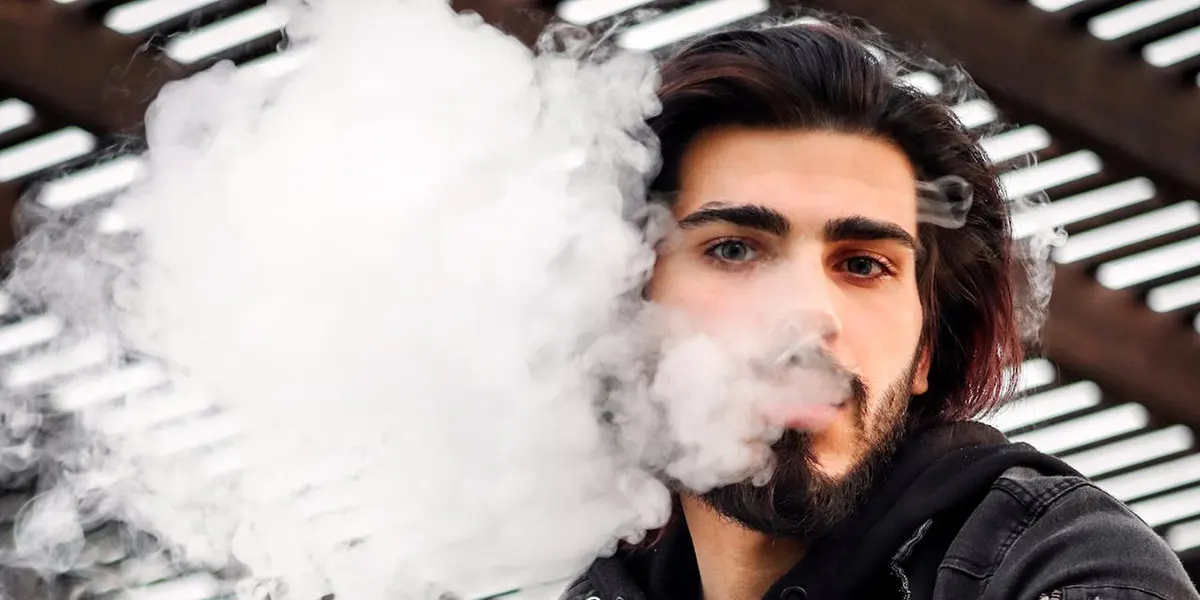How do Rechargeable Disposable Vapes Work?
12/14/2023, 5:26:52 PM 2490
The advent of rechargeable disposable vapes has ushered in a new era. How do rechargeable disposable vapes work? Let's dip into the mechanics behind rechargeable disposable vaping devices.
What Are Rechargeable Disposable Vapes?
Rechargeable disposable vapes combine the convenience of traditional disposables with the sustainability of rechargeable batteries, allowing vapers to recharge the power source while retaining the disposable nature of the vaping unit, providing an eco-friendly and economical alternative to electronic nicotine delivery systems.
Rechargeable disposable devices consist of three fundamental components: the battery, the atomizer, and the e-liquid reservoir. Each part plays a pivotal role in delivering a seamless vaping experience.
1. Battery
The powerhouse heats the coil, which in turn vaporizes the e-liquid. It provides the necessary energy for the vaping device to function and can be rechargeable for multiple uses, distinguishing it from traditional disposable vapes. The battery's capacity and voltage impact the vaping device's performance and overall lifespan.
2. Atomizer
Positioned adjacent to the battery, the atomizer plays a vital role by heating the e-liquid through its coil and wick components, powered by the battery, facilitating the transformation of the liquid into vapor upon activation, thereby enabling vapers to inhale the resultant vapor and crucially contributing to the delivery of flavor and nicotine content from the e-liquid to the vaper.
3. E-liquid Reservoir
Functioning as the storage for the e-liquid converted into vapor during use, the e-liquid reservoir channels e-liquid to the atomizer, enabling the coil to heat and generate inhalable vapor, usually holds a predefined amount, and is crafted for effortless replacement or refilling.
How Do Rechargeable Disposable Vapes Work
Rechargeable disposable devices typically work through a rechargeable battery system and disposable vape cartridges containing the e-liquid and the atomizer.
1. Charge the Battery
Connect the rechargeable battery to a compatible charging cable, plug it into a USB port or a suitable charging adapter, and ensure the battery charges completely before use. SKE Crystal s5000 is designed with a 650mAh battery capacity and Type-C charging port.
2. Attach the Disposable Cartridge
Make sure the battery is charged before removing the protective cover from the disposable cartridge and attaching it to the battery component.
3. Inhale to Activate
For draw-activated rechargeable disposable vapes, take a puff to activate and produce vapor, while vaping devices with a manual button require pressing it when inhaling to activate the heating element and generate vapor.
4. Monitor Battery Life
Monitor the battery level of rechargeable disposable vapes for their limited lifespan and recharge the battery when it's low to maintain continuous use.
5. Dispose of Cartridge
6. Replace with a New Cartridge
Acquire a compatible replacement disposable cartridge and connect it to the battery component to resume using the vaping device. Check Crystal Rechargeable Vape with prefilled disposable pods. Or check the newest SKE Crystal 4in1 revolving pod system.
Pros and Cons of Rechargeable Disposable Vapes
Advantages
Sustainability: Reusable components cut down on electronic waste compared to traditional disposables.
Cost-Efficiency: Reduce the necessity for frequent vaping device replacements.
Convenience: Vapers can recharge as needed, ensuring continuous use without waiting for replacements. Check the SKE Crystal Duo Vape of 6000 puffs and Type C charging port.
Variety: Many rechargeable disposable devices offer interchangeable cartridges with different flavors or nicotine strengths.
Customization: Refillable reservoirs enable experimentation with different vape juices.
Disadvantages
Initial Cost: Rechargeable disposables may have a higher upfront cost compared to traditional disposable vape.
Maintenance: Vapers must monitor battery life, regularly refill vape juice, and occasionally clean the vaping device components.
Complexity: Rechargeable vapes may feature more components and settings, potentially overwhelming for beginners.
Limited Portability: While reusable, rechargeable vapes may be bulkier than some disposable alternatives.
How Durable Are Rechargeable Vapes
The longevity of rechargeable vapes depends on usage frequency, battery capacity, overall build quality, etc., but on average, they can last several months to a few years with proper care and maintenance. To optimize durability:
Follow Charging Guidelines: Adhere to recommended charging cycles and avoid overcharging to maintain battery health. Monitor the battery performance and replace batteries if showing signs of degradation.
Clean Regularly: Periodically clean the rechargeable vape device, including the battery contacts and the atomizer, to prevent performance issues.
Handle with Care: Avoid dropping or subjecting the rechargeable vape device to impact, as it can impact overall durability.
To conclude, rechargeable disposable vapes blend innovation with convenience, offering vapers a sustainable and customizable alternative. As technology evolves, rechargeable disposable devices will continue to leave an indelible mark on the vaping landscape.
FAQs:
Q1: How many times can you recharge a rechargeable disposable vape?
The lifespan of a rechargeable disposable vape hinges on factors like battery capacity, charging habits, and vaping device quality. Typically, these vapes endure 100 to 300 recharge cycles before a noticeable battery decline. Adhering to proper charging guidelines enhances the chances of maximizing recharge opportunities, though individual outcomes may differ.
Q2: Do you have to refill a rechargeable vape?
Yes, rechargeable vapes usually involve refilling and utilizing a tank or pod system with e-liquid. Users must add e-liquid when the tank is empty, unlike disposable vapes pre-filled and discarded when depleted. Frequent tank refills enable customization with preferred e-liquids, flavors, and nicotine strengths, offering more choices than disposable counterparts.
Q3: What's the best rechargeable vape?
Please refer to the list named “15 Best Rechargeable Vapes In 2024” produced by Emagazine.
Q4: How do I know if my rechargeable vape is over?
#1 No Vapor Production: Depleted rechargeable vapes result in minimal or no vapor production when used.
#2 Flavor Diminished: As e-liquid nears depletion, there's a noticeable decrease in flavor quality.
#3 Battery Indicator: Some rechargeable vapes feature battery indicators; a low battery indication signals the need for a recharge.
#4 Difficulty Inhaling: Increased resistance while inhaling suggests low e-liquid or battery levels.
#5 Unusual Sounds or Tastes: Strange noises or unpleasant tastes may signify the vaping device is approaching the end of its lifespan.
#6 Check E-Liquid Level: Visually inspect the tank or pod to gauge e-liquid levels and determine if it's nearly empty.
Q5: How do I know if my vape pen is fully charged?
#1 Charging Indicator Light: Most vape pens feature an indicator light that changes color or turns off upon full charge.
#2 Complete Charging Time: Follow the user manual for the recommended charging duration; a fully charged vape pen is expected afterward.
#3 Battery Percentage Display: Advanced vape pens may include a digital display showing the battery percentage, facilitating real-time charging monitoring.
#4 USB Charger Light: When using a USB charger, observe changes in the charging light's color or it’s turning off to identify a fully charged vape pen.
#5 Automatic Shut-Off: Some vape pens automatically cease charging when the battery reaches full capacity, preventing overcharging.
#6 Test a Puff: After the recommended charging time, a gentle puff can serve as a test, as some vaping devices briefly disable firing during charging, confirming a full charge.














